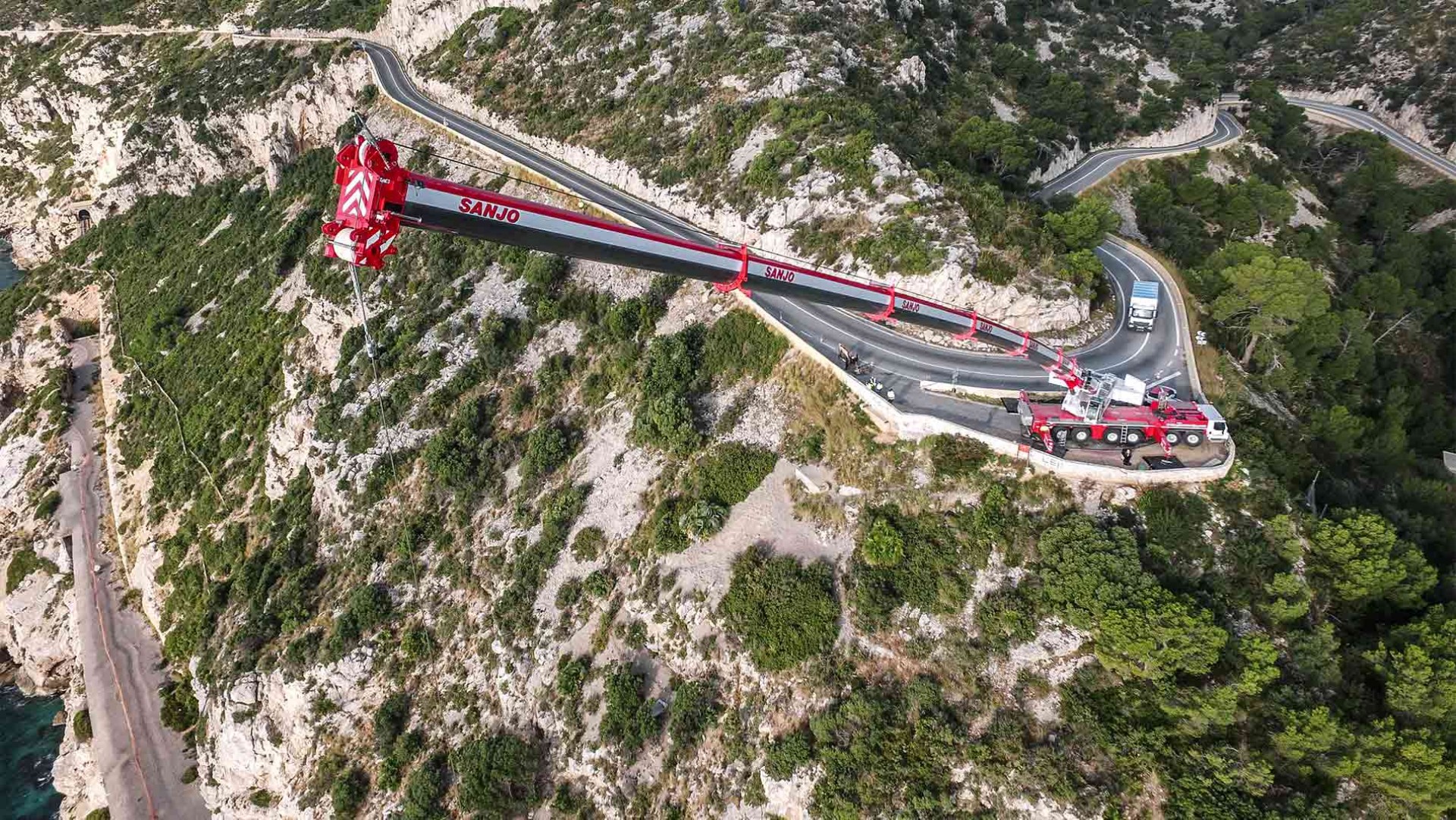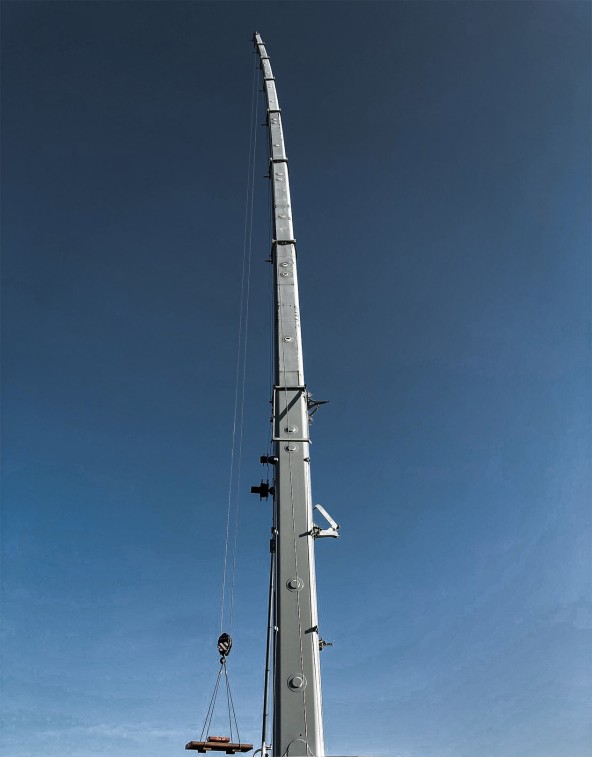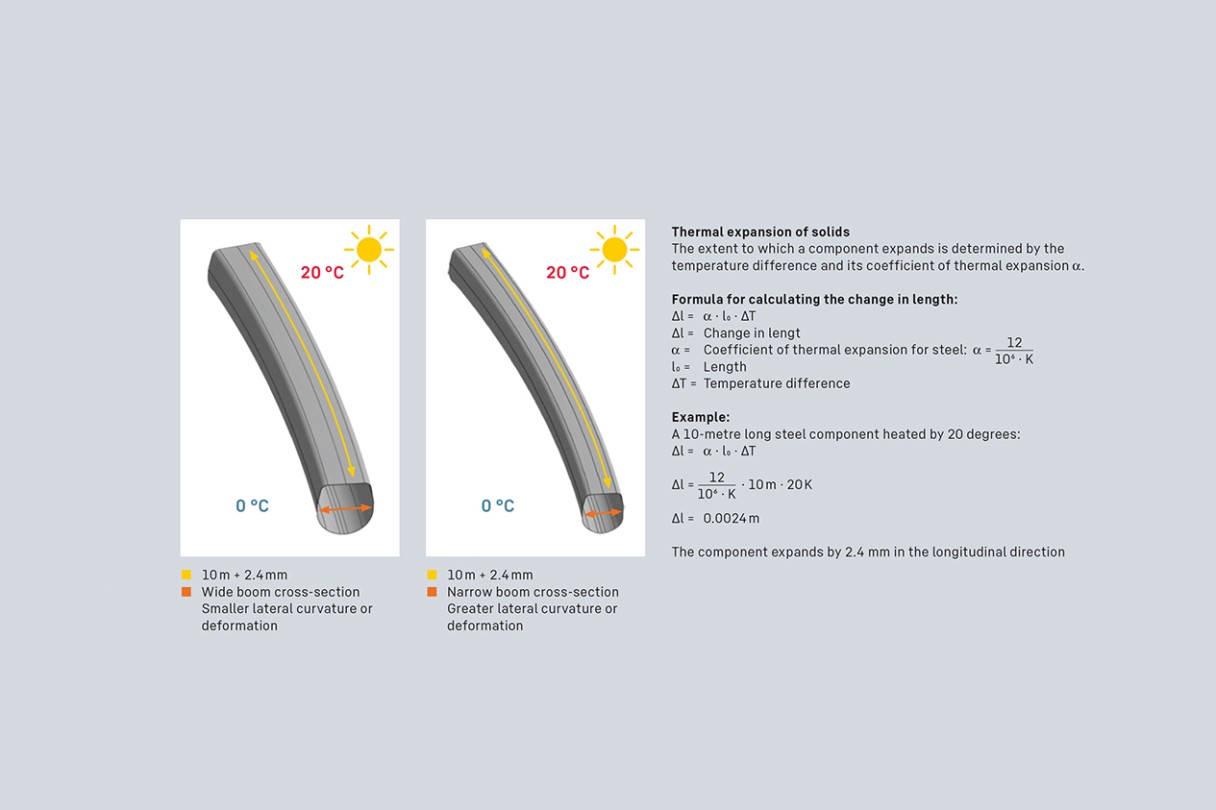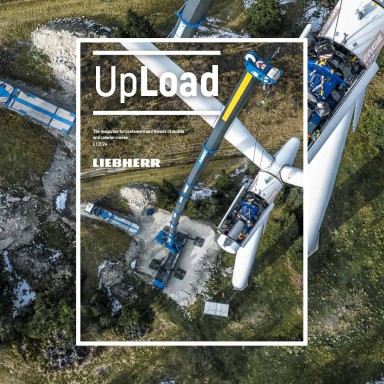
10 minutes - magazine 01 | 2024
Curved thing
We all know that a long telescopic boom bends downwards like a banana.
Lateral boom curvature due to temperature differences
However, if the boom leans sideways to the left or right, this is a worrying picture and the question arises: is the boom – and crane – really safe and stable? Joachim Henkel, a familiar face as Head of Design and Structural Engineering clarifies matters and calms worried minds.

LTM 1300-6.3 with 90-metre boom: Lateral boom curvature due to solar radiation and suspended maximum load.
The crux of the matter with steel
To do this, it is first necessary to take a look at materials science: In mobile crane construction, the highest possible ratio of load capacity to dead weight plays a decisive role in the competitiveness of the product. The use of high-tensile weldable fine-grain structural steels is the key to lightweight construction. Compared to the structural steel S355 frequently used in structural engineering, the high-tensile fine-grain structural steels used in mobile crane construction offer higher load-bearing capacity by up to a factor of 3.
But where there is sun, there is also shade. Due to the possible utilisation of the high strengths of the steels used, the elastic deformation of the crane’s load-bearing structure also increases by a factor of 3 compared to an S355. The elastic deformation of a telescopic boom under load is particularly impressive. Depending on the angular position and extension length of the telescopic boom, this pre-forming is more or less pronounced, both in the direction of the radius and laterally, i.e. to the side of the boom.
The crane operator can cope well with the elastic deformation in the direction of the radius. One of the reasons for this is that the deformation in this direction is recorded by protractors on the telescopic boom and taken into account when calculating the nominal radius in LICCON. The deformation in a lateral direction to the longitudinal axis of the boom, which is particularly noticeable on very long booms in a steep position, is not appreciated by the crane operator, as it can subjectively convey a feeling that the crane is not safe. This deformation is also unavoidable in principle and is due to the lightweight construction and the high-tensile steels used.

Joachim Henkel - Head of Design and Structural Engineering
Longer lengths ensure stronger curvatures
In recent years, there has been a trend towards ever longer telescopic booms. Whereas around 25 years ago a maximum telescopic boom length of 60 metres was sufficient for telescopic cranes in the 300 tonne lifting capacity class, today it can be 80 metres or even 90 metres for a six-axle mobile crane. As boom lengths have increased over the years, a topic that was also present 25 years ago, but was hardly noticed, is coming into focus: the additional curvature of the telescopic boom due to heating caused by solar radiation.
Particularly on cold and clear winter days, when the side of the telescopic boom facing the sun warms up, but the opposite, shaded side remains at the low ambient temperature, this effect is characterised by a significant increase in the lateral curvature of the telescopic boom. The initial lateral curvature due to one-sided heating is disproportionately increased by the lifted load, especially in the steep boom position.
The amount of lateral deformation of the telescopic boom due to heating is largely determined by three factors:
- Temperature difference between the left and right side of the telescopic boom: The greater the temperature difference, the greater the lateral deformation.
- Extension length of the telescopic boom: The longer the boom, the greater the lateral deformation.
- Cross-section width of the individual telescopic boom sections: The narrower the boom, the greater the lateral deformation.

If these assumptions are transferred to a specific telescopic boom and the additional circular curvature caused by the one-sided expansion is taken into account, the formula for calculating the deformation due to thermal expansion becomes even more complex. With the LTM 1230 5.1, for example, a maximum telescopic boom length of 75 metres results in a lateral deformation of the boom head of 0.66 metres with a temperature difference of 20 degrees between the left and right side of the telescopic boom due to the thermal expansion of the steel alone. If the telescopic boom extended to 75 metres in the steepest possible boom position is additionally loaded by its own weight and by the maximum possible load capacity of 11.4 tonnes in this position, the lateral deformation can increase to up to 2.8 metres.
Extensive measurements at Liebherr have shown that a temperature difference of 20 degrees between the left and right side of the telescopic boom is a good approximation of a limit value. The resulting lateral deformation of the boom is taken into account in the structural calculation of the crane. This means that the crane can be operated safely up to this temperature difference within the valid load chart. Nevertheless, the lateral deformation of the telescopic boom can sometimes be an interference. The crane operator can counteract this by turning the superstructure through 180° to heat the side of the telescopic boom that was previously shaded. Changing to a higher reeving also reduces the force in the retracting part of the hoist rope from the pulley head to the winch and thus the lateral deformation of the boom under load.
This article was published in the UpLoad magazine 01 | 2024.



